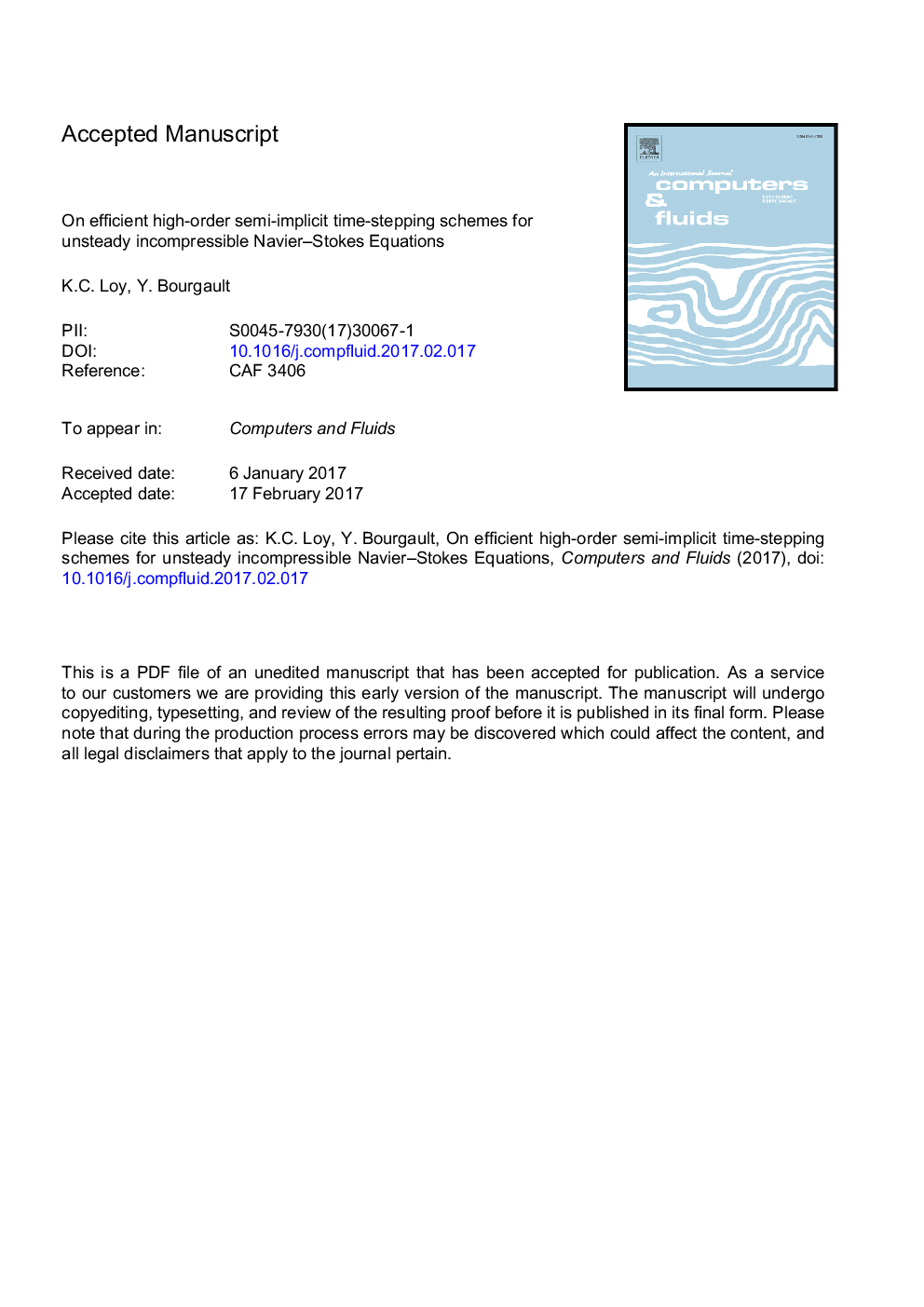| کد مقاله | کد نشریه | سال انتشار | مقاله انگلیسی | نسخه تمام متن |
|---|---|---|---|---|
| 5011936 | 1462663 | 2017 | 50 صفحه PDF | دانلود رایگان |
عنوان انگلیسی مقاله ISI
On efficient high-order semi-implicit time-stepping schemes for unsteady incompressible Navier-Stokes equations
ترجمه فارسی عنوان
در طرح های کارآمد با درجه بالا کارایی نیمه ضمنی زمان گام برای معادلات نایبر-استوکس غیرمتمرکز
دانلود مقاله + سفارش ترجمه
دانلود مقاله ISI انگلیسی
رایگان برای ایرانیان
کلمات کلیدی
مرتبه بالا زمان گذراندن، نیمه ضمنی، تصحیح نقص، معادلات ناییر استوکس، روش اصلاح متوالی،
موضوعات مرتبط
مهندسی و علوم پایه
سایر رشته های مهندسی
مکانیک محاسباتی
چکیده انگلیسی
We focus on the development of higher-order semi-implicit time-stepping methods to solve the incompressible Navier-Stokes equations. The Taylor-Hood mixed finite elements method (P2âP1) is used for space approximation of velocity and pressure. Semi-implicit time discretizations can provide very accurate approximations for nonstationary flow while treating the nonlinear terms explicitly and avoiding the need for a fancy nonlinear iterative solver. We first introduced three variants of higher-order semi-implicit time-stepping schemes: a multistep Semi-Implicit Backward Difference Formulae (SBDF) which is the easiest to implement; a one-step defect correction (DC) which produce better approximations than SBDF methods in terms of numerical errors on velocity and pressure (in time) for a given order; the one proposed by Guermond and Minev (GM), an uncoupled method which is based upon defect correction and artificial compressibility methods. SBDF and DC methods produce saddle point linear system while GM generates two linear systems with symmetric and positive definite matrix. We propose a modification on GM denoted as GM-SRM methods-which implement sequential regularization method of Navier-Stokes equations. GM-SRM methods produce more rapid convergence on pressure during the start-up while requiring smaller stabilization parameter than that for GM methods. We showcase the numerical accuracy, stability and efficiency of these methods through numerical test cases: two manufactured solutions; the flow past a circular cylinder; and the lid-driven cavity flow, all in 2D settings. All methods show an agreement with the theoretical convergence rate. SBDF methods are the most CPU-efficient, followed by DC, GM and GM-SRM methods. We observe that the presence of gradâdiv term in both GM and GM-SRM improves the numerical stability in terms of producing a higher CFL bound. Furthermore, relevant parameters, such as the Strouhal number, lift and drag coefficients are found to be very close to published values.
ناشر
Database: Elsevier - ScienceDirect (ساینس دایرکت)
Journal: Computers & Fluids - Volume 148, 22 April 2017, Pages 166-184
Journal: Computers & Fluids - Volume 148, 22 April 2017, Pages 166-184
نویسندگان
K.C. Loy, Y. Bourgault,
